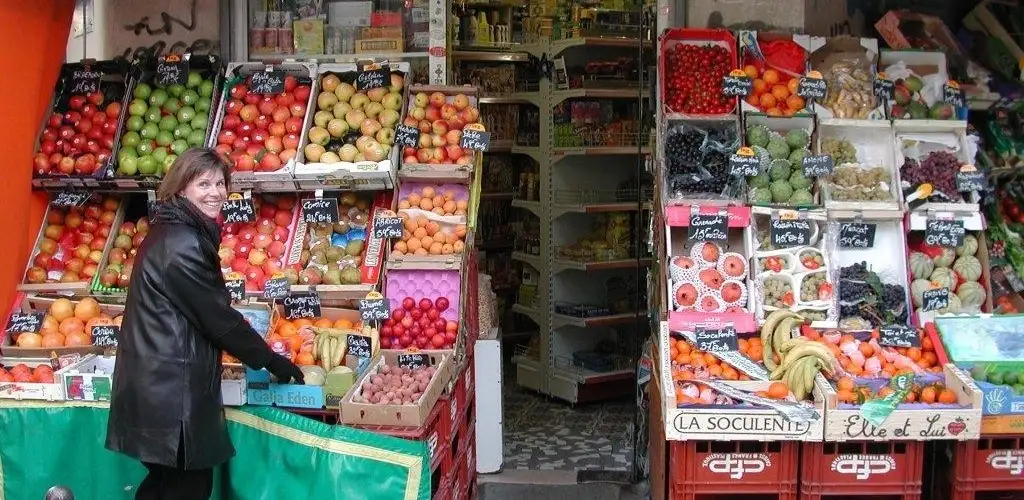
Each summer, Europe greets a stampede of sightseers and shoppers with eager cash registers. Before jumping into the peak-season pig pile, consider the advantages of an off-season trip. Given the current weakness of our dollar overseas, the potential price-savings of an off-season trip are enough to brighten a gray winter day. Airfares are often hundreds of dollars less. With fewer crowds in Europe, you’ll sleep cheaper. Many fine hotels drop their prices, and budget hotels have plenty of vacancies.
To save some money on hotels in the off-season, arrive late without a reservation, notice how many empty rooms they have (look for keys on the rack), and give the receptionist an excuse to win your business with a deep discount. Explain that you’re a senior (hosteler, student, artist, whatever) with a particular price limit, and bargain from there. Note that while tourist-oriented places may be cheaper in the low season, the opposite is true of big-city business centers (especially Brussels and the Scandinavian capitals), which are busiest and most expensive in the off-season.
For many travelers, “shoulder season”—April, May, early June, September, and early October—offers the best mix of peak-season and off-season pros and cons. In shoulder season you’ll enjoy decent weather, long days, fewer crowds, and a local tourist industry that is still eager to please and entertain.
Outside of peak season, adventurers loiter all alone through Leonardo’s home, ponder un-pestered in Rome’s Forum, kick up sand on virgin beaches, and chat with laid-back guards by log fires in French chateaux. In wintertime Venice you can be alone atop St. Mark’s bell tower, watching the clouds of your breath roll over the Byzantine domes of the church to a horizon of cut-glass Alps.
Without the crowds, you can enjoy step-right-up service at tourist offices and experience a more European Europe. Although many popular tourist-oriented parks, shows, and tours will be closed, off-season is in-season for the high culture: plays and operas are in their crowd-pleasing glory. For instance, in Vienna, while the Boys Choir, Opera, and Spanish Riding School are scarce in the summer, all have a busy schedule of performances through the rest of the year.
Europe’s major cities crackle with energy year-round. In London, you can spend your days at the British Museum and National Gallery, and your nights at a cozy pub or a world-class play. In Paris—the City of Light that always sparkles—you can get face-to-face with Mona and scale the Eiffel Tower. In Florence, you’ll see Renaissance paintings and Michelangelo’s David without peak-season crowds.
But winter travel has its drawbacks. Because much of Europe is in Canadian latitudes, the days are short. It’s dark by 5 p.m. The weather can be miserable—cold, windy, and drizzly—and then turn worse. But just as summer can be wet and gray, winter can be crisp and blue, and even into mid-November, hillsides blaze with colorful leaves.
To thrive in the winter, you’ll need to get the most out of your limited daylight hours. Start early and eat a quick lunch. Tourist offices close early, so call ahead to double-check hours and confirm your plans. Pack for the cold and wet—layers, rainproof parka, gloves, wool hat, long johns, waterproof shoes, and an umbrella. Use undershirts to limit the washing of slow-drying heavy shirts. Dress warmly. Cold weather is colder when you’re outdoors trying to enjoy yourself all day long. And cheap hotels are not always adequately heated in the off-season.
Off-season hours are limited. Tourist information offices normally stay open year-round but have shorter hours in the winter. While most sights stay open through the winter, they typically operate on shorter schedules (such as 10 a.m.-5 p.m. rather than 9 a.m.-7 p.m.), with darkness often determining the closing time. Winter sightseeing is fine in big cities, which bustle year-round, but it’s more frustrating in small tourist towns, which often close down entirely. In December many beach resorts are shut up as tight as canned hams.
While Europe’s wonderful outdoor evening ambience survives year-round in the south, wintertime streets are empty in the north after dark. English-language tours, common in the summer, are rare during the off-season, when most visitors are natives. Another disadvantage of winter travel is loneliness. The solo traveler won’t have the built-in camaraderie of other travelers that she would find in peak season. Still, this can be a plus, since it encourages you to really connect with the locals you traveled halfway around the world to meet.
Regardless of when you go, if your objective is to “meet the people,” you’ll find Europe filled with them 365 days a year.
Rick Steves ( www.ricksteves.com) writes European travel guidebooks and hosts travel shows on public television and public radio. Email him at [email protected], or write to him c/o P.O. Box 2009, Edmonds, WA 98020.
We hand-pick everything we recommend and select items through testing and reviews. Some products are sent to us free of charge with no incentive to offer a favorable review. We offer our unbiased opinions and do not accept compensation to review products. All items are in stock and prices are accurate at the time of publication. If you buy something through our links, we may earn a commission.
Related
Top Fares From
Today's Top Travel Deals
Brought to you by ShermansTravel
Greece: 9-Night Vacation, Incl. Meteora &...
Exoticca
 vacation
$2099+
vacation
$2099+
New Year Sale: Luxe, 9-Nt Alaska...
Oceania Cruises
 cruise
$3599+
cruise
$3599+
Ohio: Daily Car Rentals from Cincinnati
85OFF.com
 Car Rental
$19+
Car Rental
$19+



